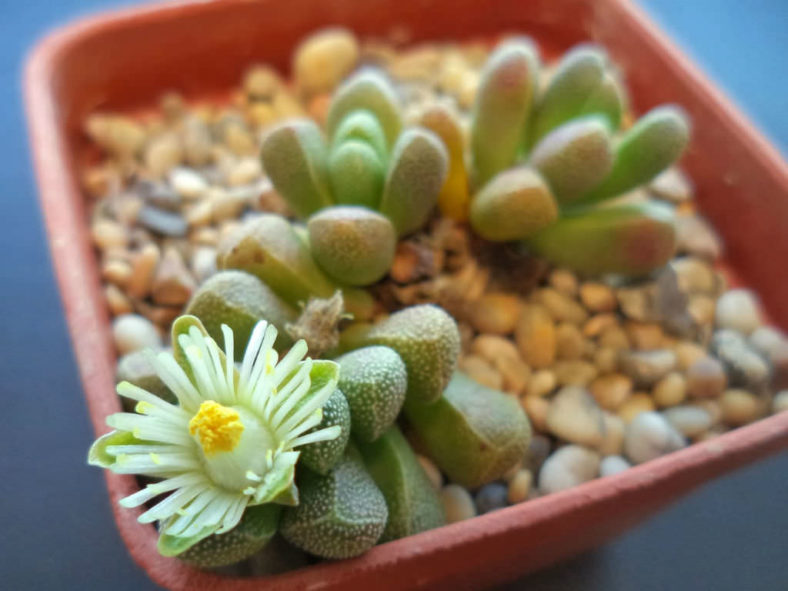Scientific Name
Rhinephyllum muirii N. E. Br.
Synonym(s)
Neorhine pillansii
Scientific Classification
Family: Aizoaceae
Subfamily: Ruschioideae
Tribe: Ruschieae
Genus: Rhinephyllum
Origin
Rhinephyllum muirii is native to South Africa. It grows in quartz fields and shales in Little Karoo in the Western Cape province.
Description
Rhinephyllum muirii is a small succulent that forms dense clumps of many shoots on a fleshy caudex. The leaves are inclined, green with small whitish tubercles in the upper half, and margins and keel with a white cartilaginous edge. They can grow up to 1 inch (2.5 cm) long and up to 0.4 inches (1 cm) wide.
The flowers are solitary, sweetly scented, and yellowish and appear on pedicels up to 0.5 inches (1.2 cm) long in spring and summer and open at night. They can reach up to 0.6 inches (1.5 cm) in diameter.

Hardiness
USDA hardiness zones 10a to 11b: from 30 °F (-1.1 °C) to 50 °F (+10 °C).
How to Grow and Care
The basics of Mesemb care are very simple, with free-draining soil, plenty of sun and ventilation, and regular light watering in the right season. Yet the difficulties are endless, trying to adapt to the Mesembs' adaptability and follow their growth habits in your particular conditions.
Mesembs require a loam-based compost with extra drainage material such as horticultural grit or perlite. They all like good light conditions and plenty of ventilation.
Some are relatively cold-hardy and can even survive mild winters outside. Most will survive temperatures down to the freezing point. Some Mesembs begin to grow in the autumn as the temperature drops and the days get shorter.
Because different genera within the Mesemb family have different growing conditions, care must be taken with watering. Some genera will benefit from a light water spray to prevent shriveling during their dormant period.
See more at How to Grow and Care for Mesembs.
Links
- Back to genus Rhinephyllum
- Succupedia: Browse succulents by Scientific Name, Common Name, Genus, Family, USDA Hardiness Zone, Origin, or cacti by Genus
Photo Gallery
Click on a photo to see a larger version.


